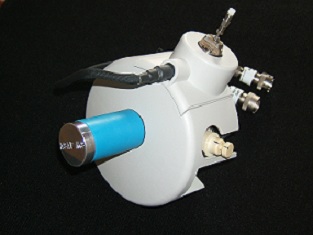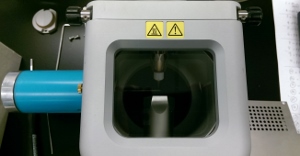Atmospheric Solids Analysis Probe (ASAP®) Mass Spectrometry
See what you're missing!!!.
Atmospheric Solids Analysis Probe (ASAP®) mass spectrometry allows direct analysis of samples using an atmospheric pressure ionization (API) source found on Liquid Chromatography Mass Spectrometry (LCMS) instruments. The ASAP probe permits fast analysis of solid, liquid, tissue, or material (e.g. polymer) samples. ASAP is a low cost and more sensitive alternative to other direct API techniques such as DART® or DAPCI. In the ASAP® method, vaporization of the sample occurs when it is exposed to a hot nitrogen desolvation gas from an ESI or APCI probe supplied with the instrument. The ASAP probe does not interfere with ESI or APCI operation, making switching between methods nearly instantaneous. This technique is especially useful on commercial high end API mass spectrometers which have the capability of accurate mass and mass-selected fragmentation, such as a Bruker Qh-FTMS™, Jeol AccuTOF™, Thermo Ortitrap™, or Waters Synapt HDMS™.
Benefits:
- Low cost <$10K.
- Does not interfere with normal source operations on most instruments.
- Fast direct analysis.
- Compatible with ESI/APCI operations (No source change required).
- Enclosed ion source for safety (vapors are contained inside the source).
- No sample prep required, and solids as well as liquids can be analyzed.
- Low picogram sensitivity.
- Ideal for high resolution instruments.
- Good substitute for EI/CI solids probe analysis.
- Analyze LC fractions in seconds.
The ASAP method has been shown to be a useful replacement for the conventional EI/CI vacuum solids probe and is useful for the analysis of volatiles and semi volatiles in tissue and other solid material samples. For example, chemical changes in basil leaf were readily observed when the plant was grown under cold and dark conditions relative to a normally grown plant. Polymer additives are quickly observed and at higher temperature many polymers thermally degrade to aid polymer identification. Drugs can be detected in urine without any pretreatment or on currency by simply placing the corner of a bill in the hot gas stream. Environmental contaminants such as polynuclear aromatics are easily detected using the ASAP method. See the Applications section for additional information.

Waters/Micromass Q-TOF I™ with ASAP probe installed.
Thermo Ion Max Source with ASAP probe installed.

Agilent APCI source with ASAP probe installed. This source is also used on Bruker instruments.

Thermo Ion Max NG and Easy-Max NG Sources with ASAP probe.
Atmospheric Solids Analysis Probe, ASAP (Patent 7,977,629).